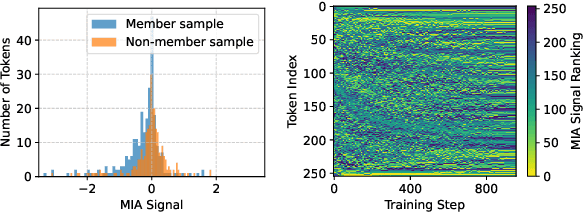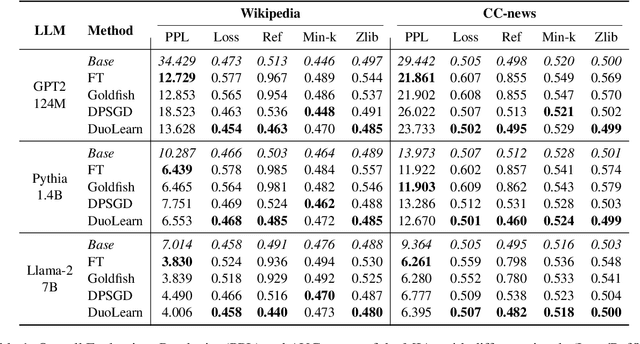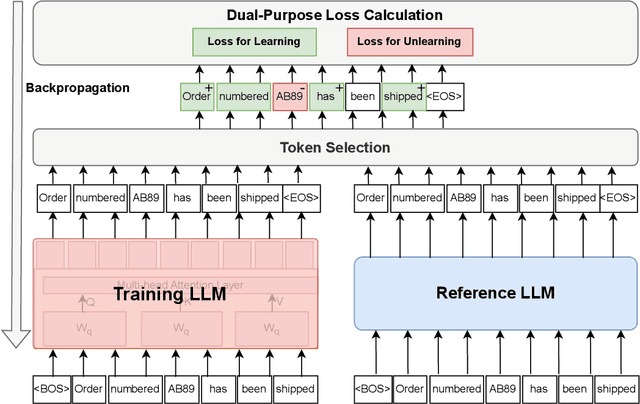Li Xiong
Search is All You Need for Few-shot Anomaly Detection
Apr 16, 2025



Abstract:Few-shot anomaly detection (FSAD) has emerged as a crucial yet challenging task in industrial inspection, where normal distribution modeling must be accomplished with only a few normal images. While existing approaches typically employ multi-modal foundation models combining language and vision modalities for prompt-guided anomaly detection, these methods often demand sophisticated prompt engineering and extensive manual tuning. In this paper, we demonstrate that a straightforward nearest-neighbor search framework can surpass state-of-the-art performance in both single-class and multi-class FSAD scenarios. Our proposed method, VisionAD, consists of four simple yet essential components: (1) scalable vision foundation models that extract universal and discriminative features; (2) dual augmentation strategies - support augmentation to enhance feature matching adaptability and query augmentation to address the oversights of single-view prediction; (3) multi-layer feature integration that captures both low-frequency global context and high-frequency local details with minimal computational overhead; and (4) a class-aware visual memory bank enabling efficient one-for-all multi-class detection. Extensive evaluations across MVTec-AD, VisA, and Real-IAD benchmarks demonstrate VisionAD's exceptional performance. Using only 1 normal images as support, our method achieves remarkable image-level AUROC scores of 97.4%, 94.8%, and 70.8% respectively, outperforming current state-of-the-art approaches by significant margins (+1.6%, +3.2%, and +1.4%). The training-free nature and superior few-shot capabilities of VisionAD make it particularly appealing for real-world applications where samples are scarce or expensive to obtain. Code is available at https://github.com/Qiqigeww/VisionAD.
Sharpness-Aware Parameter Selection for Machine Unlearning
Apr 08, 2025Abstract:It often happens that some sensitive personal information, such as credit card numbers or passwords, are mistakenly incorporated in the training of machine learning models and need to be removed afterwards. The removal of such information from a trained model is a complex task that needs to partially reverse the training process. There have been various machine unlearning techniques proposed in the literature to address this problem. Most of the proposed methods revolve around removing individual data samples from a trained model. Another less explored direction is when features/labels of a group of data samples need to be reverted. While the existing methods for these tasks do the unlearning task by updating the whole set of model parameters or only the last layer of the model, we show that there are a subset of model parameters that have the largest contribution in the unlearning target features. More precisely, the model parameters with the largest corresponding diagonal value in the Hessian matrix (computed at the learned model parameter) have the most contribution in the unlearning task. By selecting these parameters and updating them during the unlearning stage, we can have the most progress in unlearning. We provide theoretical justifications for the proposed strategy by connecting it to sharpness-aware minimization and robust unlearning. We empirically show the effectiveness of the proposed strategy in improving the efficacy of unlearning with a low computational cost.
Node-level Contrastive Unlearning on Graph Neural Networks
Mar 04, 2025Abstract:Graph unlearning aims to remove a subset of graph entities (i.e. nodes and edges) from a graph neural network (GNN) trained on the graph. Unlike machine unlearning for models trained on Euclidean-structured data, effectively unlearning a model trained on non-Euclidean-structured data, such as graphs, is challenging because graph entities exhibit mutual dependencies. Existing works utilize graph partitioning, influence function, or additional layers to achieve graph unlearning. However, none of them can achieve high scalability and effectiveness without additional constraints. In this paper, we achieve more effective graph unlearning by utilizing the embedding space. The primary training objective of a GNN is to generate proper embeddings for each node that encapsulates both structural information and node feature representations. Thus, directly optimizing the embedding space can effectively remove the target nodes' information from the model. Based on this intuition, we propose node-level contrastive unlearning (Node-CUL). It removes the influence of the target nodes (unlearning nodes) by contrasting the embeddings of remaining nodes and neighbors of unlearning nodes. Through iterative updates, the embeddings of unlearning nodes gradually become similar to those of unseen nodes, effectively removing the learned information without directly incorporating unseen data. In addition, we introduce a neighborhood reconstruction method that optimizes the embeddings of the neighbors in order to remove influence of unlearning nodes to maintain the utility of the GNN model. Experiments on various graph data and models show that our Node-CUL achieves the best unlearn efficacy and enhanced model utility with requiring comparable computing resources with existing frameworks.
Tokens for Learning, Tokens for Unlearning: Mitigating Membership Inference Attacks in Large Language Models via Dual-Purpose Training
Feb 27, 2025



Abstract:Large language models (LLMs) have become the backbone of modern natural language processing but pose privacy concerns about leaking sensitive training data. Membership inference attacks (MIAs), which aim to infer whether a sample is included in a model's training dataset, can serve as a foundation for broader privacy threats. Existing defenses designed for traditional classification models do not account for the sequential nature of text data. As a result, they either require significant computational resources or fail to effectively mitigate privacy risks in LLMs. In this work, we propose a lightweight yet effective empirical privacy defense for protecting training data of language modeling by leveraging the token-specific characteristics. By analyzing token dynamics during training, we propose a token selection strategy that categorizes tokens into hard tokens for learning and memorized tokens for unlearning. Subsequently, our training-phase defense optimizes a novel dual-purpose token-level loss to achieve a Pareto-optimal balance between utility and privacy. Extensive experiments demonstrate that our approach not only provides strong protection against MIAs but also improves language modeling performance by around 10\% across various LLM architectures and datasets compared to the baselines.
HARBOR: Exploring Persona Dynamics in Multi-Agent Competition
Feb 17, 2025Abstract:We investigate factors contributing to LLM agents' success in competitive multi-agent environments, using auctions as a testbed where agents bid to maximize profit. The agents are equipped with bidding domain knowledge, distinct personas that reflect item preferences, and a memory of auction history. Our work extends the classic auction scenario by creating a realistic environment where multiple agents bid on houses, weighing aspects such as size, location, and budget to secure the most desirable homes at the lowest prices. Particularly, we investigate three key questions: (a) How does a persona influence an agent's behavior in a competitive setting? (b) Can an agent effectively profile its competitors' behavior during auctions? (c) How can persona profiling be leveraged to create an advantage using strategies such as theory of mind? Through a series of experiments, we analyze the behaviors of LLM agents and shed light on new findings. Our testbed, called HARBOR, offers a valuable platform for deepening our understanding of multi-agent workflows in competitive environments.
Auto-Search and Refinement: An Automated Framework for Gender Bias Mitigation in Large Language Models
Feb 17, 2025Abstract:Pre-training large language models (LLMs) on vast text corpora enhances natural language processing capabilities but risks encoding social biases, particularly gender bias. While parameter-modification methods like fine-tuning mitigate bias, they are resource-intensive, unsuitable for closed-source models, and lack adaptability to evolving societal norms. Instruction-based approaches offer flexibility but often compromise task performance. To address these limitations, we propose $\textit{FaIRMaker}$, an automated and model-independent framework that employs an $\textbf{auto-search and refinement}$ paradigm to adaptively generate Fairwords, which act as instructions integrated into input queries to reduce gender bias and enhance response quality. Extensive experiments demonstrate that $\textit{FaIRMaker}$ automatically searches for and dynamically refines Fairwords, effectively mitigating gender bias while preserving task integrity and ensuring compatibility with both API-based and open-source LLMs.
A Survey on Data Markets
Nov 09, 2024



Abstract:Data is the new oil of the 21st century. The growing trend of trading data for greater welfare has led to the emergence of data markets. A data market is any mechanism whereby the exchange of data products including datasets and data derivatives takes place as a result of data buyers and data sellers being in contact with one another, either directly or through mediating agents. It serves as a coordinating mechanism by which several functions, including the pricing and the distribution of data as the most important ones, interact to make the value of data fully exploited and enhanced. In this article, we present a comprehensive survey of this important and emerging direction from the aspects of data search, data productization, data transaction, data pricing, revenue allocation as well as privacy, security, and trust issues. We also investigate the government policies and industry status of data markets across different countries and different domains. Finally, we identify the unresolved challenges and discuss possible future directions for the development of data markets.
Geo-Llama: Leveraging LLMs for Human Mobility Trajectory Generation with Spatiotemporal Constraints
Aug 25, 2024



Abstract:Simulating human mobility data is essential for various application domains, including transportation, urban planning, and epidemic control, since real data are often inaccessible to researchers due to expensive costs and privacy issues. Several existing deep generative solutions propose learning from real trajectories to generate synthetic ones. Despite the progress, most of them suffer from training stability issues and scale poorly with growing data size. More importantly, they generally lack control mechanisms to steer the generated trajectories based on spatiotemporal constraints such as fixing specific visits. To address such limitations, we formally define the controlled trajectory generation problem with spatiotemporal constraints and propose Geo-Llama. This novel LLM-inspired framework enforces explicit visit constraints in a contextually coherent way. It fine-tunes pre-trained LLMs on trajectories with a visit-wise permutation strategy where each visit corresponds to a time and location. This enables the model to capture the spatiotemporal patterns regardless of visit orders and allows flexible and in-context constraint integration through prompts during generation. Extensive experiments on real-world and synthetic datasets validate the effectiveness of Geo-Llama, demonstrating its versatility and robustness in handling a broad range of constraints to generate more realistic trajectories compared to existing methods.
TabularMark: Watermarking Tabular Datasets for Machine Learning
Jun 21, 2024Abstract:Watermarking is broadly utilized to protect ownership of shared data while preserving data utility. However, existing watermarking methods for tabular datasets fall short on the desired properties (detectability, non-intrusiveness, and robustness) and only preserve data utility from the perspective of data statistics, ignoring the performance of downstream ML models trained on the datasets. Can we watermark tabular datasets without significantly compromising their utility for training ML models while preventing attackers from training usable ML models on attacked datasets? In this paper, we propose a hypothesis testing-based watermarking scheme, TabularMark. Data noise partitioning is utilized for data perturbation during embedding, which is adaptable for numerical and categorical attributes while preserving the data utility. For detection, a custom-threshold one proportion z-test is employed, which can reliably determine the presence of the watermark. Experiments on real-world and synthetic datasets demonstrate the superiority of TabularMark in detectability, non-intrusiveness, and robustness.
DPDR: Gradient Decomposition and Reconstruction for Differentially Private Deep Learning
Jun 04, 2024Abstract:Differentially Private Stochastic Gradients Descent (DP-SGD) is a prominent paradigm for preserving privacy in deep learning. It ensures privacy by perturbing gradients with random noise calibrated to their entire norm at each training step. However, this perturbation suffers from a sub-optimal performance: it repeatedly wastes privacy budget on the general converging direction shared among gradients from different batches, which we refer as common knowledge, yet yields little information gain. Motivated by this, we propose a differentially private training framework with early gradient decomposition and reconstruction (DPDR), which enables more efficient use of the privacy budget. In essence, it boosts model utility by focusing on incremental information protection and recycling the privatized common knowledge learned from previous gradients at early training steps. Concretely, DPDR incorporates three steps. First, it disentangles common knowledge and incremental information in current gradients by decomposing them based on previous noisy gradients. Second, most privacy budget is spent on protecting incremental information for higher information gain. Third, the model is updated with the gradient reconstructed from recycled common knowledge and noisy incremental information. Theoretical analysis and extensive experiments show that DPDR outperforms state-of-the-art baselines on both convergence rate and accuracy.
 Add to Chrome
Add to Chrome Add to Firefox
Add to Firefox Add to Edge
Add to Edge